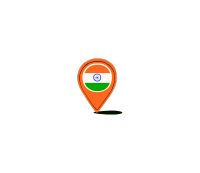The Kashmir Conflict: Causes, Impact, and Current Status
The Kashmir conflict is one of the world’s most enduring and volatile disputes, marked by deep historical roots, repeated violence, and ongoing strategic rivalry between India and Pakistan. Its resonance continues to shape South Asian geopolitics and the lives of millions. What is the Kashmir Conflict? The Kashmir conflict is a territorial dispute primarily between India and Pakistan, with China also controlling a portion of the region. The conflict centers on the former princely state of Jammu and Kashmir, which both India and Pakistan claim in full but control in part. India administers about 55% of the territory, Pakistan about 30%, and China the remaining 15%. Causes of the Kashmir Conflict 1947 Partition of British India: The root cause lies in the partition of British India in 1947, which created the new dominions of India and Pakistan. Princely states, including Jammu and Kashmir, could choose to join either country or remain independent. The Hindu Maharaja of the Muslim-majority state initially chose independence. Tribal Invasion and Accession: In October 1947, Pakistani tribal militias invaded Kashmir, prompting the Maharaja to seek Indian military help and accede to India, triggering the first Indo-Pakistani war. UN Ceasefire and Line of Control: The war ended in 1949 with a UN-brokered ceasefire, establishing a ceasefire line (later the Line of Control, or LoC) that split the region between Indian and Pakistani control. Territorial Disputes: Both countries claim the entire region, leading to further wars in 1965 and 1999, and persistent skirmishes along the LoC. Insurgency and Militancy: Since the late 1980s, Indian-administered Kashmir has witnessed a violent insurgency, initially driven by demands for independence and later by Pakistan-backed militant groups seeking merger with Pakistan. China’s Involvement: China controls areas like Aksai Chin and has fought a brief war with India over these territories in 1962, adding a third dimension to the conflict. Impact of the Conflict Human Cost: Tens of thousands of people—civilians, militants, and soldiers—have died since 1947. The 1990s saw the exodus of Kashmiri Hindus from the Kashmir Valley due to militant violence. Life Along the Line of Control: Residents near the LoC live with constant uncertainty, facing shelling, displacement, and destruction of homes and infrastructure. Livelihoods are frequently disrupted, and families are forced into bunkers during escalations. Political and Social Unrest: The region has experienced repeated cycles of protests and crackdowns, particularly in the 2010s and after major incidents like the 2019 Pulwama attack and the revocation of Jammu and Kashmir’s special status by India. Militarization: Kashmir is one of the most heavily militarized regions in the world, with both India and Pakistan maintaining a significant military presence along the LoC. International Tensions: The conflict has drawn international concern, especially given both countries’ nuclear capabilities and the risk of escalation. Current Status and Recent Developments (2025) Operation Sindoor: In May 2025, following a terrorist attack in Pahalgam (Indian-administered Kashmir), India launched "Operation Sindoor," conducting missile strikes against alleged terrorist infrastructure in Pakistan and Pakistan-administered Kashmir. Pakistan responded with drone and missile attacks, escalating tensions to unprecedented levels before a ceasefire was brokered on May 10, 2025. Technological Escalation: The 2025 crisis saw the first significant use of drone warfare between India and Pakistan, marking a new phase in their military rivalry. Ceasefire and Diplomacy: Despite intense violence, diplomatic intervention (notably from the United States) led to a ceasefire. Both sides have since agreed to pursue dialogue and confidence-building measures, though the situation remains fragile. Life on the LoC: Civilians continue to bear the brunt of the conflict, with periodic shelling, displacement, and loss of life and property. The LoC remains a tense and heavily fortified boundary. Key Terms Explained Line of Control (LoC): The de facto border dividing Indian- and Pakistani-administered Kashmir, established after the first Indo-Pakistani war and formalized in the 1972 Simla Agreement. It is one of the world’s most militarized and volatile frontiers. Operation Sindoor: The codename for India’s May 2025 military strikes against terrorist targets in Pakistan and Pakistan-administered Kashmir, representing a shift towards direct cost-imposition strategies in response to cross-border terrorism. Conclusion The Kashmir conflict remains unresolved, with deep historical grievances, ongoing violence, and the constant risk of escalation between nuclear-armed neighbors. The region’s future hinges on sustained dialogue, confidence-building, and addressing the aspirations and rights of its people.
5/21/20251 min read
Operation Sindoor
Justice Delivered: Fight Against Terror.
Contact Us:
Service
operationsindoor0507@gmail.com
© 2025. All rights reserved.



